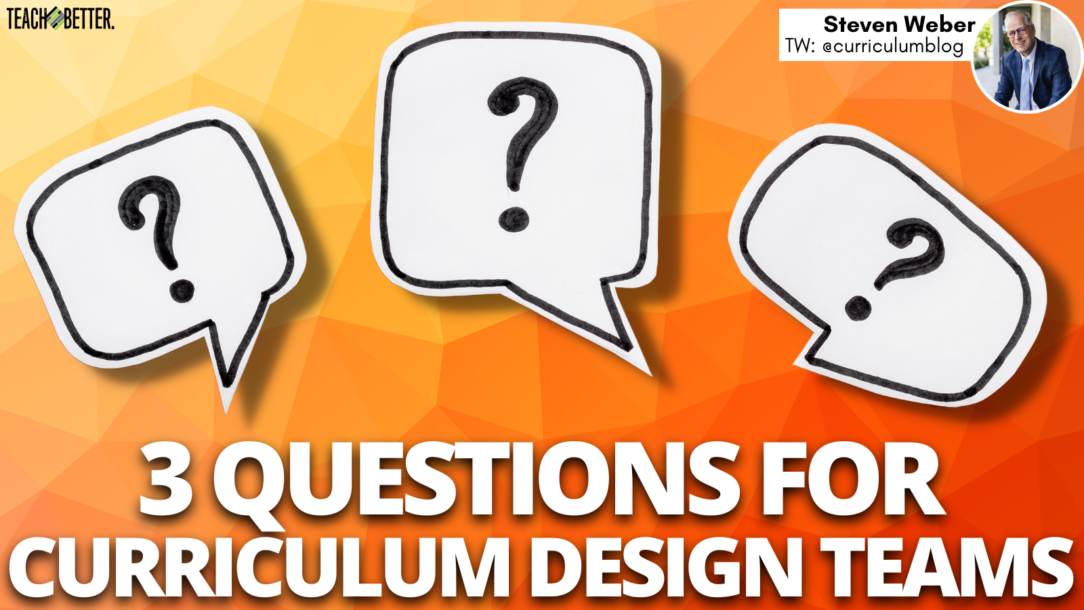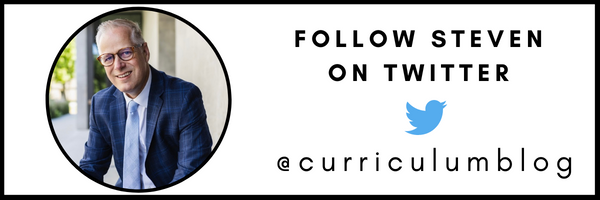TL;DR:
- Traditional curriculum focuses on content coverage, but shifts are needed towards prioritizing student learning over teaching.
- Identifying common misunderstandings aids in adapting instruction, fostering deeper understanding for diverse learners.
- Ownership of learning must shift from teacher-led activities to student agency, with emphasis on transferable understanding for real-world application.
3 Questions For Curriculum Design Teams
Traditional teaching focuses on content, coverage, and compliance. The goal of learning is often skewed by memorizing new content. After twenty years of observing collaborative teams and department meetings, I have come to the conclusion that curriculum planning often amounts to covering the state standards, completing the unit by a deadline, and ensuring that every student learns at the same pace.
“The current educational system was designed for teachers to control and [manage learning]. This continues today because teachers are the ones held accountable and responsible for the learning instead of the learners” (Bray, 2017). Curriculum Design Teams must shift their focus from teaching to learning. When the emphasis is on teaching, the needs of the learner can be overlooked. “The fundamental purpose of school is learning, not teaching (DuFour et al., 2004).”
Teachers may design engaging activities, but at the end of the week, students recall the balloons, dissection, gallery walk, M&Ms, nature hike, roller coaster, or game. We must shift from planning engaging activities to designing for deep understanding. An over-emphasis on planning activities can lead to a lack of transfer. Three questions can change the focus of your team meetings from planning teaching to causing learning. The intent of teacher teams is pure. However, we need to ask different questions in order to maximize student understanding.
What Are Common Misunderstandings?
Traditional curriculum design begins with the question, “What should every student know and be able to do?” Teacher teams design lessons and units around Key Skills or Enduring Understandings. When teachers return to their classrooms, they face a wide range of readiness levels. It would benefit novice and veteran teachers to brainstorm a list of common misunderstandings. When teachers enter the classroom equipped with a list of misunderstandings, it is easier to scaffold, support, and chunk instruction. If we know that some students annually struggle multiplying fractions, then the curriculum design team could create a list of common misunderstandings.
When teaching is focused on common misunderstandings, it is easier to adapt instruction and instructional strategies. It can be frustrating when you hit a bump in the road and several students need additional support. Planning for common misunderstandings can lead to more adaptability when it comes to teaching. Traditional curriculum design focuses on teaching the lesson; planning for common misunderstandings focuses on teaching the learner.
When teaching is focused on common misunderstandings, it is easier to adapt instruction and instructional strategies. Click To TweetWho Owns the Learning?
When you walk into a classroom, there is evidence of ownership. In classroom A, the teacher may be doing all of the thinking and solving problems. In classroom B, the learners may be engaged in productive struggle and may be asking questions. We must ask, “What is the balance of compliance to student contribution?” In other words, who owns the learning? Learner agency occurs when students set goals, reflect on their progress, and transfer their understanding to new situations.
Traditional curriculum design focused on designing activities. If the entire planning time is focused on teaching, then it is unlikely that the curriculum plan will address learner agency. “Students exhibit agency when they feel in control of their learning, authentically engage with the material, and take responsibility for their educational journey” (Andrew, 2022). If we are designing lessons to cover skills, catch up with the pacing guide, or cover what we addressed last March, then our focus is not on student ownership. To teach for understanding, we must shift our focus from planning teaching to planning learning.
[scroll down to keep reading]What Does Transfer Look Like?
Many teacher teams write curriculum, create rubrics, identify activities, write essential questions, and develop lesson plans. Wiggins wrote (2010), “Transfer doesn’t just happen as a result of a typical regimen of teaching and testing, no matter how rigorous the course of study. Transfer happens only when we aggressively teach and test for understandings that are applied in situations.” If a student can complete an assignment, pass a test, or collaborate with their peers in a group project, it may not be evidence of transfer. “Students should be presumed innocent of understanding until proven guilty by preponderance of evidence” (Wiggins & McTighe, 2005).
Teaching for transfer must be intentional. If teachers have a clear understanding of the transfer goals, it will be easier to support students and facilitate learning. “Establishing transfer goals across units allows teachers to determine what it is that students should be able to do long-term, and then ask themselves if their lessons provide students sufficient practice to ensure that they are developing the necessary thinking required” (Fisher & Frey, 2018).
Curriculum Design Teams are essential and their conversations have a direct impact on teaching and learning. If the goal of a team meeting is to write the curriculum, then teachers could complete the product without achieving the desired outcome. There are instructional moves and student moves. Traditional planning focuses on key content, skills, concepts, and direct instruction. What would it look like if you asked each learner to drive the car, parallel park, and accelerate on the entrance ramp? When the learner owns the learning, they move from the passenger to the driver. This requires Curriculum Design Teams to ask different questions.
References
Andrew, R. (2022). What is student agency and why is it important? Retrieved from https://www.linkedin.com/pulse/what-student-agency-why-important-richard-andrew.
Bray, B. (2017). Defining learner agency. Retrieved from https://barbarabray.net/2017/11/08/defining-learner-agency/.
DuFour, R., DuFour R., Eaker, R., & Karhanek, G. (2004). Whatever it takes: How professional learning communities respond when kids don’t learn. Bloomington, IN: Solution Tree.
Fisher, D., & Frey, N. (2018). ‘Learning follows a spiral’: Doug Fisher & Nancy Frey on learning transfer. Education Week. Retrieved from https://www.edweek.org/education/opinion-learning-follows-a-spiral-doug-fisher-nancy-frey-on-learning-transfer/2018/03#:~:text=Establishing%20transfer%20goals%20across%20units,developing%20the%20necessary%20thinking%20required.
Wiggins, G. (2010). Transfer as the goal of education. Retrieved from https://authenticeducation.org/transfer-as-the-goal-of-education/.
Wiggins, G., & McTighe, J. (2005). Understanding by design (2nd ed.). ASCD.
About Steven Weber
Dr. Steven Weber is a curriculum leader. He has served on multiple state and national boards. His areas of research include curriculum design, multiplying leaders, professional learning, and school leadership.




